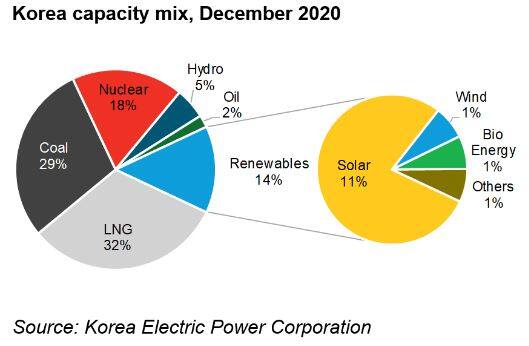- Low-carbon green energy engine is driving the economic development of South Korea today

The current solar photovoltaic power generation projects promote the growth of South Korean renewable energy investment. According to data from the South Korean Renewable Energy Investment Trends Report, in 2020, South Korean solar energy investment will reach US$3.6 billion. It is expected that in 2021, this data will increase to 5.1 billion US dollars.

The South Korean New Deal, which was launched in July 2020, has increased investor interest by expanding auction capacity and increasing solar subsidy budgets. By the end of 2020, the total installed capacity of solar energy will be 15 GW, accounting for more than 11% of the total installed capacity of 129 GW in Korea. The installed wind power capacity is 1.6 GW, while the biomass power generation capacity is 1.3 GW. Thermal power plants (including natural gas, coal and nuclear power) dominate the country’s power structure, with a total capacity of 108 GW.
Large-scale projects that received financing in 2020 include the 96 MW Anji Yantian photovoltaic power station and the 65 MW Hyundai E&C Ruishan reclaimed land photovoltaic power station. Since 2017, no offshore wind power project has received any financing. However, in the context of the country's goal of achieving 12 GW of offshore wind power by 2030, it continues to launch new projects in Malaysia.
Total and Green Investment Group established a joint venture in 2020 to jointly develop a 2.3 GW offshore wind power project. The Danish renewable energy giant Orsted also announced a 1.6 GW offshore project in Incheon. The Korea Development Bank is the largest renewable energy financing lead bank in 2020. The Korea Federation of Community Credit Cooperatives and Samsung Life Insurance rank in the forefront of syndicated lenders. Editor/Xu Shengpeng
Comment
 Praise
Praise
 Collect
Collect
 Comment
Comment
 Search
Search














Write something~